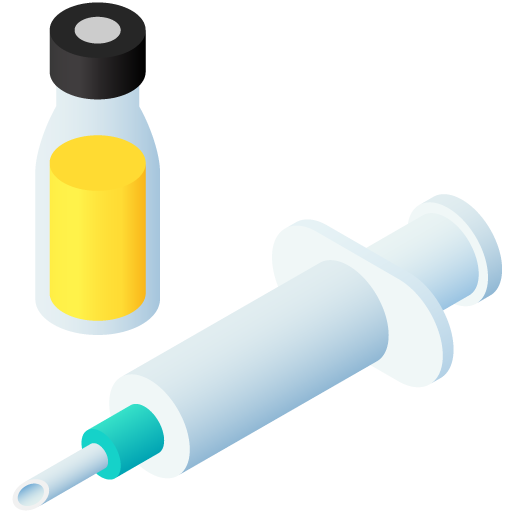Combination therapy
No results were found for your selected species
Equip F vet.
Active substance
ATC code
Species
Horses.
Indications
For the active immunisation of horses of 5 months of age or older against Equine
Influenza of H7N7 and H3N8 types (European or American strains, including Florida sublineage Clade 1 and Clade 2 isolates) to reduce clinical signs and virus excretion after infection.
Onset of immunity: within 2 weeks of completion of the primary course Duration of immunity: 15 months.
Dose to be administered and administration route
Dose: 2 ml.
Administration: Equip F should be shaken thoroughly before use, and administered by deep intramuscular injection.
Vaccination schedule: For protection against quine influenza, Equip F should be used as follows:
|
Primary Course |
First dose |
EQUIP F 6 week interval |
|
|
Second dose |
EQUIP F 5 month interval |
|
Boosters |
1st booster |
EQUIP F 12-15 month interval |
|
2nd and subsequent boosters |
|
EQUIP F 12-15 month intervals |
Note: The routine practice of administering booster doses annually may remain the most convenient, even though protection against equine influenza has been demonstrated by challenge studies 15 months following the third vaccination (first booster dose). No field challenge studies have been carried out prior to the third vaccination; instead efficacy was evaluated by serology which showed titres equivalent to those found in horses protected against challenge at 15 months. It is recommended that a single booster dose should only be administered to horses that have already received a full primary course using vaccines that contain the same types of equine influenza virus included in this vaccine. A full primary course may be considered necessary in horses that have not been suitably primed.
Adverse reactions
Horses.
|
Rare (1 to 10 animals / 10,000 animals treated): |
Injection site swelling1,3 Stiffness1 Elevated temperature1, 2 |
|
Very rare (<1 animal / 10,000 animals treated, including isolated reports): |
Injection site pain Hypersensitivity reaction4 Anorexia, Lethargy |
1 This condition normally resolves by the day following vaccination.
2 Mild, transient, typically 9-12 hours post vaccination.
3 Local, small (10-20 mm in diameter), soft, non-painful.
4 In the event of an allergic or anaphylactic reaction, immediate treatment should be given with a soluble glucocorticoid intravenously or adrenalin intramuscularly.
Reporting adverse events is important. It allows continuous safety monitoring of a veterinary medicinal product. Reports should be sent, preferably via a veterinarian, to either the marketing authorisation holder or the national competent authority via the national reporting system. See the package leaflet for respective contact details.
Dispensing
POM-V - Prescription Only Medicine – VeterinarianSUMMARY OF PRODUCT CHARACTERISTICS
1. NAME OF THE VETERINARY MEDICINAL PRODUCT
Equip F
2. QUALITATIVE AND QUANTITATIVE COMPOSITION
Per dose of 2ml:
Active substances:
|
Equine influenza virus inactivated strains: |
|
|
A/equine/Newmarket/77 (H7N7) |
≥ 1.2 log10 HAI* |
|
A/equine/Borlange/91(H3N8) |
≥ 2.1 log10 HAI* |
|
A/equine/Kentucky/98 (H3N8) |
≥ 2.4 log10 HAI* |
* HAI: Haemagglutination Inhibition titre
Adjuvant(s): Quil A
For a full list of excipients, see section 6.1.
3. PHARMACEUTICAL FORM
Suspension for injection.
4. CLINICAL PARTICULARS
4.1 Target species
Horses from 5 months of age
4.2 Indications for use, specifying the target species
For the active immunisation of horses of 5 months of age or older against Equine Influenza of H7N7 and H3N8 types (European or American strains, including Florida sublineage Clade 1 and Clade 2 isolates) to reduce clinical signs and virus excretion after infection.
Duration of immunity is at least 15 months.
Onset of immunity is within 2 weeks of completion of the primary course.
4.3 Contraindications
None
4.4 Special warnings
The efficacy of active immunisation of young foals against equine influenza will be influenced by the level of maternally derived antibodies. This will vary between individuals due to a number of factors, e.g. the immune status of the dam; adequacy of colostral intake by the foal, etc. The vaccine should not be used in foals below 5 months of age, and foals should not be vaccinated until maternally derived antibodies have fallen below protective levels.
In any animal population there may be a small number of individuals which fail to respond fully to vaccination. Successful vaccination depends upon correct storage and administration of the vaccine and the ability of the animal to respond. This can be influenced by such factors as genetic constitution, intercurrent infection, age, nutritional status, concurrent drug therapy and stress.
4.5 Special precautions for use
i. Special precautions for use in animals
Do not use in unhealthy animals.
The product should be administered by respecting appropriate (aseptic) injection technique
ii. Special precautions to be taken by the person administering the veterinary medicinal product to animals
In case of accidental self-injection, seek medical advice immediately and show the package leaflet or the label to the physician.
4.6 Adverse reactions (frequency and seriousness)
Rarely (<1 in 1000), animals may exhibit a reaction to vaccination. This may be manifest by stiffness, a mild, transient rise in temperature, typically 9-12 hours post vaccination, or a small soft, non-painful local swelling (10-20 mm in diameter) at the injection site. These conditions normally resolve by the day following vaccination.
Injection site pain, anorexia and lethargy have been reported in very rare cases (<1 in10, 000).
Occasional hypersensitivity reactions may occur. In the event of an allergic or anaphylactic reaction, immediate treatment should be given with a soluble glucocorticoid intravenously or adrenalin intramuscularly.
4.7 Use during pregnancy, lactation or lay
The vaccine may be used in pregnant mares which have been vaccinated against influenza before pregnancy.
Heavily pregnant mares should not be subject to undue stress when vaccinated.
4.8 Interaction with other medicinal products and other forms of interaction
No information is available on the safety and efficacy of this vaccine when used with any other veterinary medicinal product. A decision to use this vaccine before or after any other veterinary medicinal product therefore needs to be made on a case by case basis.
4.9 Amounts to be administered and administration route
Dose: 2 ml
Administration: Equip F should be shaken thoroughly before use, and administered by deep intramuscular injection.
Vaccination Regime: For protection against equine influenza, Equip F should be used as follows:
|
Primary Course First dose |
EQUIP F 6 week interval |
|
Second dose |
EQUIP F 5 month interval |
|
Boosters 1st booster |
EQUIP F 12-15 month interval |
|
2nd and subsequent boosters |
EQUIP F 12-15 month intervals |
Note: The routine practice of administering booster doses annually may remain the most convenient, even though protection against equine influenza has been demonstrated by challenge studies 15 months following the third vaccination (first booster dose). No field challenge studies have been carried out prior to the third vaccination; instead efficacy was evaluated by serology which showed titres equivalent to those found in horses protected against challenge at 15 months.
It is recommended that a single booster dose should only be administered to horses that have already received a full primary course using vaccines that contain the same types of equine influenza virus included in this vaccine. A full primary course may be considered necessary in horses that have not been suitably primed.
4.10 Overdose (symptoms, emergency procedures, antidotes), if necessary
Accidental overdosage is unlikely to cause any reactions other than those described in section 4.6.
4.11 Withdrawal period(s)
Zero days
5. IMMUNOLOGICAL PROPERTIES
Equip F stimulates active immunity against equine influenza virus by eliciting both a cell mediated immune response and a humoral response.
Further information on the protection afforded by vaccination:
Onset of immunity has been demonstrated by virulent challenge for Equine
Influenza strains A/equine/Newmarket/1/93 (American lineage H3N8), A/equine/South Africa/4/03 (Florida sublineage Clade 1 of the American lineage H3N8), A/equine/Sydney/2888-8/07 (Florida sublineage Clade 1 of the American lineage H3N8) and A/equine/Richmond/1/07 (Florida sublineage Clade 2 of the American lineage H3N8).
Duration of immunity has been demonstrated by virulent challenge for Equine Influenza strains A/equine/Sussex/89 (Eurasian lineage H3N8) and A/equine/Newmarket/2/93 (Eurasian lineage H3N8).
Protection afforded by vaccination is additionally demonstrated by serology for Equine Influenza strains A/equine/Newmarket/77 (H7N7),
A/equine/Brentwood/79 (Eurasian lineage H3N8), A/equine/Borlange/91
(Eurasian lineage H3N8), A/equine/Kentucky/98 (American lineage H3N8),
A/equine/Newmarket/1/93 (American lineage H3N8),
A/equine/Newmarket/2/93 (Eurasian lineage H3N8), A/equine/South
Africa/4/03 (Florida sublineage Clade 1 of the American lineage H3N8), A/equine/Sydney/2888-8/07 (Florida sublineage Clade 1 of the American lineage H3N8) and A/equine/Richmond/1/07 (Florida sublineage Clade 2 of the American lineage H3N8).
ATC Vet Code: QI05AA01
6. PHARMACEUTICAL PARTICULARS
6.1 List of excipients
Quillaic Acid derivative (Quil A)
Phosphatidyl choline
Cholesterol
Ammonium acetate
Phosphate buffered saline
6.2 Incompatibilities
Do not mix with any other veterinary medicinal product.
6.3 Shelf life
Shelf-life of the veterinary medicinal product as packaged for sale: 3 years
6.4 Special precautions for storage
Store in a refrigerator (2°C to 8°C).
Protect from light. Do not freeze.
Keep the container in the outer carton.
6.5 Nature and composition of immediate packaging
Type I glass vial with chlorobutyl rubber stopper and aluminium overseal. Packaging: Box of 10 single-dose vials. Each box contains ten sterile disposable 2 ml syringes and 10 sterile needles.
Type I glass syringes closed with bromobutyl rubber plunger stopper and tip cap.
Packaging: Box of 10 single-dose prefilled syringes with needles Not all pack sizes may be marketed.
6.6 Special precautions for the disposal of unused veterinary medicinal product or waste materials derived from the use of such products
Any unused veterinary medicinal product or waste materials derived from such veterinary medicinal products should be disposed of in accordance with local requirements.
7. MARKETING AUTHORISATION HOLDER
Zoetis UK Limited
1st Floor, Birchwood Building
Springfield Drive
Leatherhead
Surrey
KT22 7LP
8. MARKETING AUTHORISATION NUMBER
Vm 42058/4061
9. DATE OF FIRST AUTHORISATION
17 October 2005
10. DATE OF REVISION OF THE TEXT
August 2020
Approved 19 August 2020
 TRUSTED SOURCE
TRUSTED SOURCE









